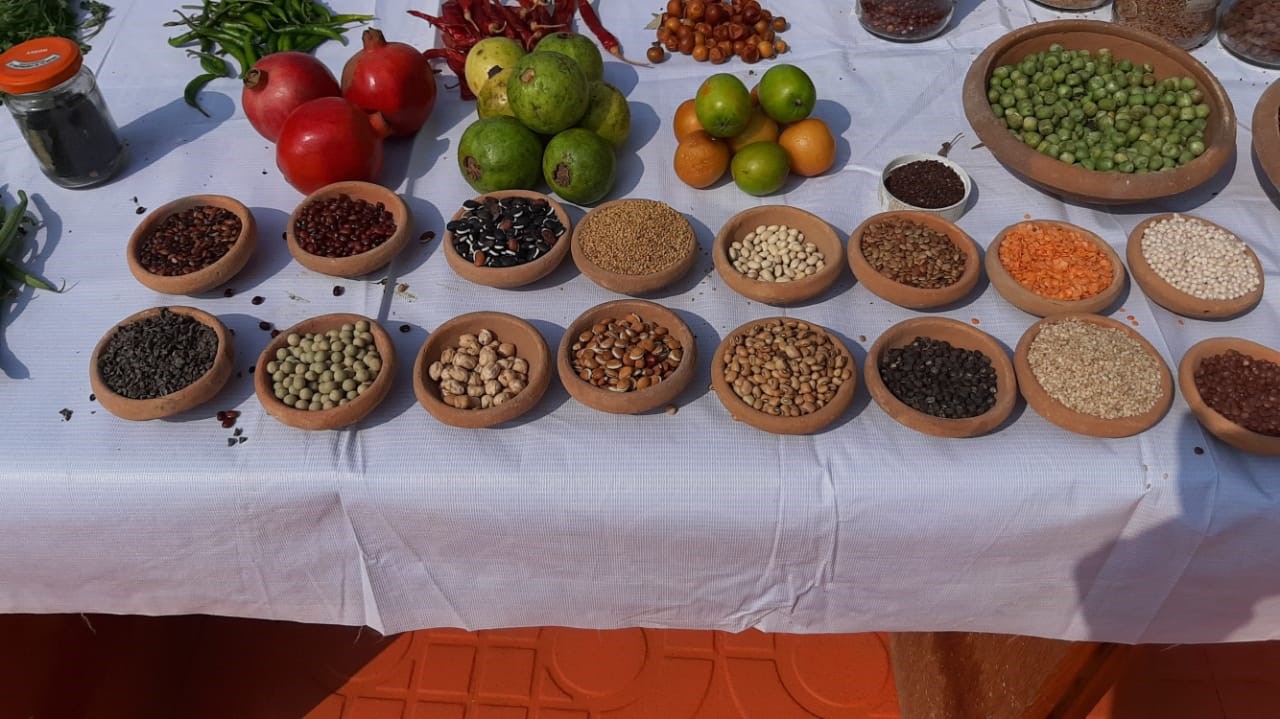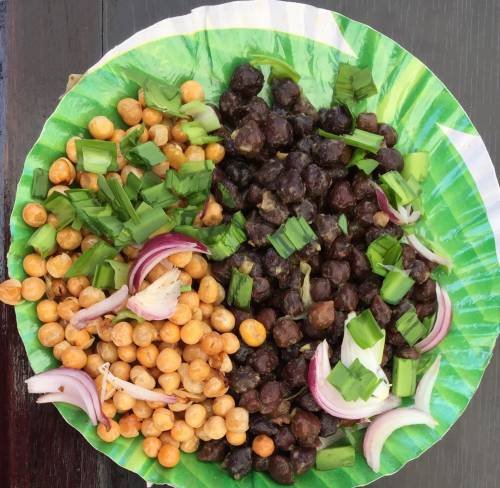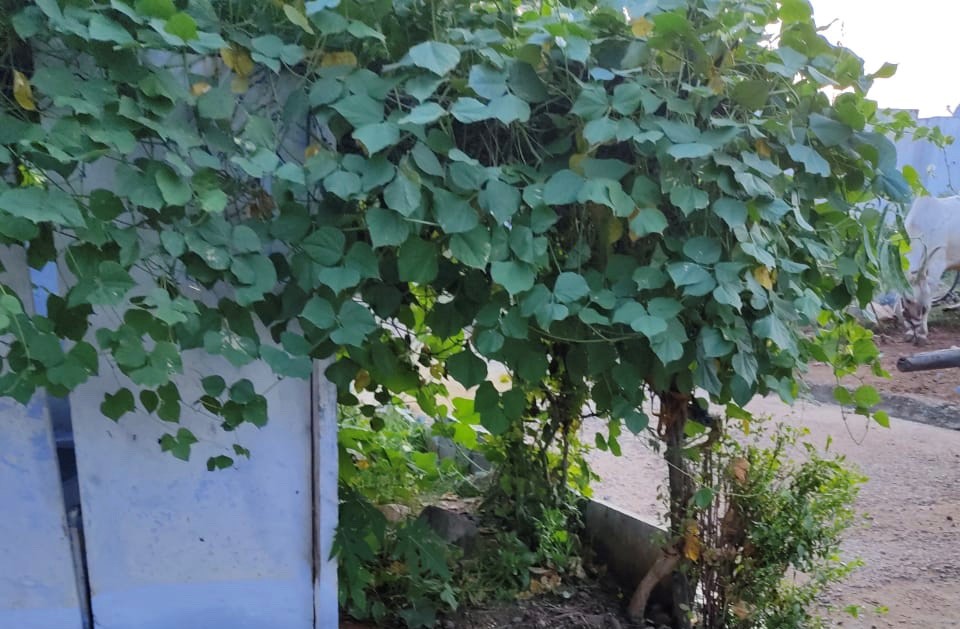The cultivation of pulses plays an important role in nutrition and culture
By Salome Yesudas | Chethana, Joining Hands India
There is so much happiness associated with the pulses (leguminous crops like dried beans, chickpeas and lentils). Most Indian sweets are made of pulses like ladoo, halwa, and payasam. For any festival or birthday or wedding or any celebration, you need pulses.
Pulses play an important and vital role in the food and nutritional security of the Indian people and, for that matter, anywhere in the world. Pulses are so important that the U.N. established February 10 as World Pulses Day.
Chethana farmers (Joining Hands India) are growing about 500 acres of different pulses, which is about 50% of their cultivated farmland. Chethana farmers work on dry land that relies on rain fed agriculture for which pulses are well suited. Chethana farmers grow 10 varieties of pulses: red gram, green gram, black gram, horse gram, field bean, cow pea, Bengal gram, Rajmah, lentil and Lethyrus.
There are so many benefits to producing and consuming pulses. Pulses are an excellent source of protein. In Indian diets, cereals constitute 50% of protein, but the quality of the protein is not as good as the quality contained within pulses, which constitute only 27% of the protein in the Indian diet. In Andhra Pradesh, diets heavy in cereals have left 48-60% of children aged 6-59 months anemic, 33% with stunted growth, 21% with wasting disease, and 31.8% underweight. Therefore, Chethana farmers are working to improve community knowledge of the diversity of pulses and their nutritional benefits.
In addition to the nutritional benefits, the husk, outer layers, and hay provide fodder for animals. The stalks from pigeon peas can be used as firewood. Many of the pulses grow as creepers, so when they grow horizontally, they cover the soil and act as a mulch to retain the moisture of the soil and prevent erosion. Pulses, like the field bean creeper can be diverted so that it grows vertically up a tree or another structure to save space.
Not only do pulses provide nutrition for communities, but they provide nutrition for the soil. Pulses do well when incorporated into a mixed cropping system with cereals and vegetables because they promote a symbiosis. Pulses are not parasitic; they do not extract nutrients from the soil. Pulses will always add nutrition to the soil by fixing nitrogen. 25 million hectares of pulses are cultivated around the world. In 2014, worldwide, pulses fixed approximately 2-6 million tons of nitrogen in the soil. So, in terms of pollution, the use of fertilizers can be reduced if we increase pulse cultivation. And thus, we can reduce greenhouse gasses.
Most of the pulses don’t require irrigation. They can survive on good rains and moisture retained in the soil. So, they are not water intensive.
Another benefit to pulses is that they can serve as a form of cash for people. At any time, pulses can be sold for cash when the household needs to pay a bill or make a household purchase. Pulses serve as a particularly important cash resource for poor women. But because pulses can be sold for decent cash people tend to sell their pulses. At Chethana, we encourage farmers to “Keep the best, sell the rest” rather than “best you sell, keep the rest.”
70% of the pulses cultivated by Chethana farmers come from the seeds that farmers save and store themselves. In this way, the farmers are very self-sufficient. Chethana farmers are organizing into Farmer Producer Organizations and scaling up production, but they still have work to do to improve storage and processing losses which can be up to 10-15%. However, Chethana has encouraged farmer households to revive indigenous storage methods which have reduced losses at the household level.

Indigenous seed storage method of taking pulses and mixing with ash and neem leaves and another 3 or 4 local leaves, and then drying and then storing in bamboo baskets sealed with red mud. This basket has been opened. Photo by Peter Khunlein.
Storage and processing losses are 10-15%. This is an area that if improved would help farmers a lot. Chethana played a role by reviving indigenous storage methods. They take the pulses and mix with ash and neem leaves and another 3 or 4 local leaves, and they dry and then store in bamboo baskets and seal them with red mud. Whenever they want to use, they will open it and use.
Now that Chethana farmers are organized into Farmer Producer Organizations and are now scaling up production, they must figure out how to store pulses and grains on a larger scale.
But there have been certain policy changes in India that have led to reduced production and therefore reduced consumption of pulses. One major change came in 2002 with the introduction of Bt Cotton which is a genetically modified organism (GMO). Traditionally, Indian farmers would grow cotton with millet or pigeon pea, which is a pulse. However, once the Bt cotton was introduced, it became a monocrop because it was no longer safe to grow it in mixed cropping with food crops due to the high levels of pesticides and chemical fertilizers required in its production. Therefore, the introduction of Bt cotton led to a shrinking of the area of pulse cultivation, especially that of pigeon pea.
And current day policies continue to affect food security and farmers. Back in September 2020, farmers in Punjab began peaceful protests of new agricultural policies in the form of three new farm bills. The Farm bills would essentially reorganize agriculture away from food security towards a cash crop production model with the goal of exporting the produce, and essentially prioritizing the rights of agro-corporations over the rights of farmers. Farmers in every state are supporting the protesting farmers. They are organizing fasting days, protests, rallies, and writing in the local papers.
Farmers are speaking out to maintain their dignity, freedom, power, accessibility, and choice options. No one can be against the farmers because they are giving us food. And all of us at one point, whether daughters of farmers or granddaughters of farmers, in every house, everyone is related to farmers. You can’t separate India from farming.
As pulses nourish both soils and souls, any policy that is framed in farming should widen the options rather limit the options and choices. Farmers need strengthening of cooperatives not the corporate culture in Agriculture. A huge diversity of pulses is India’s heritage. Let us cultivate, consume, conserve and commercialize when necessary.
The work of the Presbyterian Hunger Program is possible thanks to your gifts to One Great Hour of Sharing.


